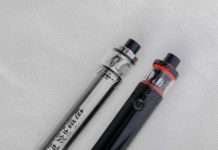- On today’s episode, we speak with marine biologist Isha Bopardikar, an independent researcher who is using bioacoustics to study humpback dolphins off the west coast of India.
- Last month, Mongabay’s India bureau published an article with the headline “What underwater sounds tell us about marine life.” As Mongabay contributor Sejal Mehta notes in the piece, the world beneath the ocean’s surface is a noisy place, with animals sounding off for a number of purposes. Now, of course, humanity is interjecting more and more frequently, intruding on the underwater soundscape.
- As Isha Bopardikar tells Mehta in the Mongabay India piece, in order to understand how marine animals use the underwater space and how human activities affect their behavior, we need hard data. That’s where her current work off the west coast of India comes in. In this Fields Notes segment, Bopardikar plays for us some of her dolphin recordings and explains how they are informing her research.
On today’s episode, we speak with marine biologist Isha Bopardikar, an independent researcher who is using bioacoustics to study humpback dolphins off the west coast of India.
Listen here:
Last month, Mongabay’s India bureau published an article with the headline “What underwater sounds tell us about marine life.” Mongabay contributor Sejal Mehta notes in the piece that the world beneath the ocean’s surface is a noisy place, with animals sounding off for a number of purposes, from communicating with fellow members of their social units and attracting a mate to protecting their territory and hunting for food. Now, of course, humanity is interjecting more and more frequently, intruding on the underwater soundscape.
As marine biologist Isha Bopardikar tells Mehta in the Mongabay India piece, some of the most prevalent anthropogenic noises in the ocean are from oil and gas exploration, shipping, and other mechanized vessels. In order to understand how marine animals use the underwater space and how human activities affect their behavior, we need hard data, Bopardikar says. That’s where her current work off the west coast of India comes in.
Bopardikar is an independent researcher whose work is funded by the Rufford Foundation’s Small Grant For Nature Conservation. She receives additional support and research assistance from the Bioacoustics Research Program at the Cornell Lab of Ornithology, housed at Cornell University in the US. The Bioacoustics Research Program, or BRP, supplied the hydrophone Bopardikar uses to collect acoustic data on Endangered Indian Ocean humpback dolphins who frequent a portion of India’s west coast that is busy with shipping traffic and other ocean-borne human endeavors.
In this Field Notes segment, Bopardikar plays us some of the recordings of the dolphins that she’s made and explains how these recordings are informing her research, which aims to shed light on humpback dolphins’ social behaviors and determine how disruptive human activities like shipping and fishing are to the animals.
Here’s this episode’s top news:
Would you like to hear about the Mongabay team’s long list of snake bites, or learn which huge mammal chased our Program Manager up a tree? Have you ever wondered about the origins of Mongabay, and how we got that name? We now offer Insider Content that gives members exclusive access to behind-the-scenes reporting and stories from our team. For a small monthly donation, you’ll get answers to questions like these and support our work in a new way. Visit mongabay.com/insider to learn more and join the growing community of Mongabay readers on the inside track.
If you enjoy the Mongabay Newscast, we ask that you please consider becoming a monthly sponsor via our Patreon page, at patreon.com/mongabay. Just a dollar per month will really help us offset the production costs and hosting fees, so if you’re a fan of our audio reports from nature’s frontline, please support the Mongabay Newscast at patreon.com/mongabay.
You can subscribe to the Mongabay Newscast on Android, the Google Podcasts app, Apple Podcasts, Stitcher, TuneIn, RSS, Castbox, Pocket Casts, and via Spotify. Or listen to all our episodes via the Mongabay website here on the podcast homepage.


Follow Mike Gaworecki on Twitter: @mikeg2001
FEEDBACK: Use this form to send a message to the author of this post. If you want to post a public comment, you can do that at the bottom of the page.
This story first appeared on Mongabay
South Africa Today – Environment
This article is licensed under a Creative Commons Attribution-NoDerivatives 4.0 International License.
You may republish this article, so long as you credit the authors and Mongabay, and do not change the text. Please include a link back to the original article.












